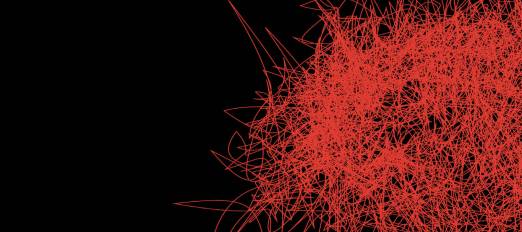Five artists, at different stages of their education, practicing varying media, participated in a residency to work with the collections as part of their contemporary practice. The project resulted in the new works populating the exhibition, as well as a lively series of upcoming performances, film screening and workshops led by the artists to highlight aspects of their research and practice.
Sonya Derviz’s practice is focused on how space is used today. For UCL Art Museum she has produced installation work, to consider how fabric can define and express space, how the visual qualities of surfaces can be understood as a spatial element, and the ways in which daily experience of light influences how we look at the collection and the uses of the space in which it is housed. The work was made specifically for the Print Room or adjusted to it, asking us to find relations to ourselves, to our situations and surroundings.
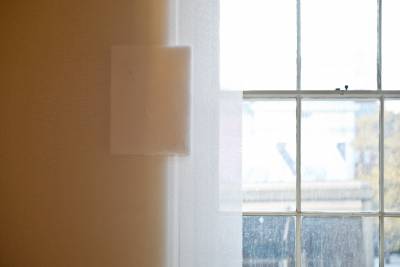
Photograph by Natalia Janula
Cyrus Hung’s collection of traces, the common rubbish left behind on the walls and floors of the Slade studios, remind us of the everyday activities, experiments and lives that exist behind student practice, and the culmination of study that leads up to the highly anticipated, yet stressful degree show. The albums shall be taken out for examination at set times on Wednesdays by UCL Art Museum staff.
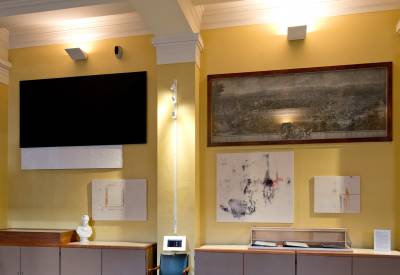
Work by Cyrus Hung and Sonya Derviz, image by Natalia Janula
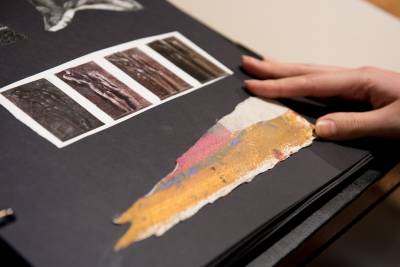
Image Natalia Janula
Eloise Lawson explores the notion of the precarious archive by considering the indexical potential of texts that accompany artworks. Struck by the evocative qualities of the Museum’s registers, Lawson chose fragments and assembled them together as a way of animating and re-imagining the collection. When performed, the final work traverses across 11,000 works at great speed, to provide a partial and unreliable portrait of the collection. How this practice can lead to a deliberate misreading will be explored in a zine-making workshop, and other scheduled events by the artist.
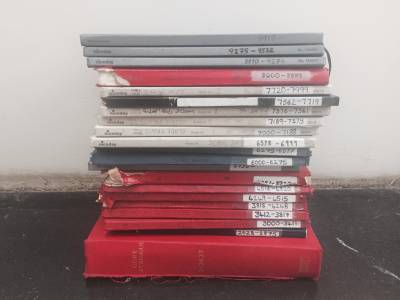
Image by Eloise Lawson
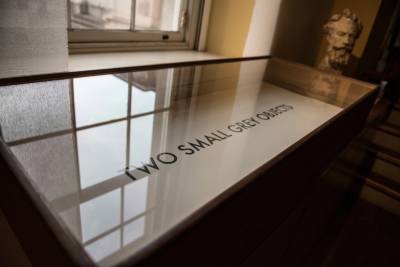
Detail of Ruins in a Landscape by Eloise Lawson, Image by Natalia Janula
Amanda Rice’s moving image work takes as its starting point JMW Turner’s Colebrook Dale (1825), a print depicting a once active lime kiln in Shropshire, the industrial scars and abandoned pits now covered by the new town of Telford. Taking the form of a caveat, Rice’s flag plays upon the sites’ links to the industrial revolution, and acts as a cinematic device whereby the objects’ visual folding and unfolding suggests an ever-shifting topography of extracted material, manipulated surfaces and new economies.
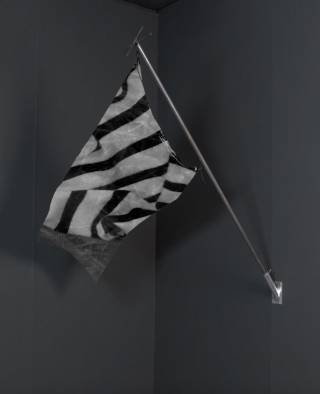
Detail of Flag, Amanda Rice, HD video
In her studio practice Grace Richardson explores how to make ever-finer casts of objects in paint. Here she creates an artificial skin to mimic the natural velum found in the collections, as a means of exploring the fragility and impermanence of skin, the push and pull of conservation versus degradation. In contrast to Jeremy Bentham’s mummified head on display in the nearby Octagon Gallery, Richardson’s piece has a brief lifespan, and will purposefully disintegrate by the end of the exhibition.
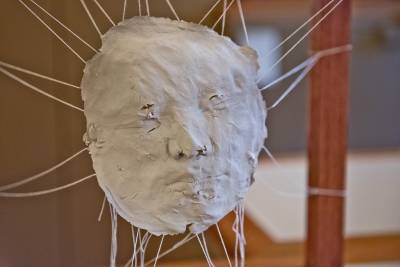
Image by Natalia Janula
 Close
Close


